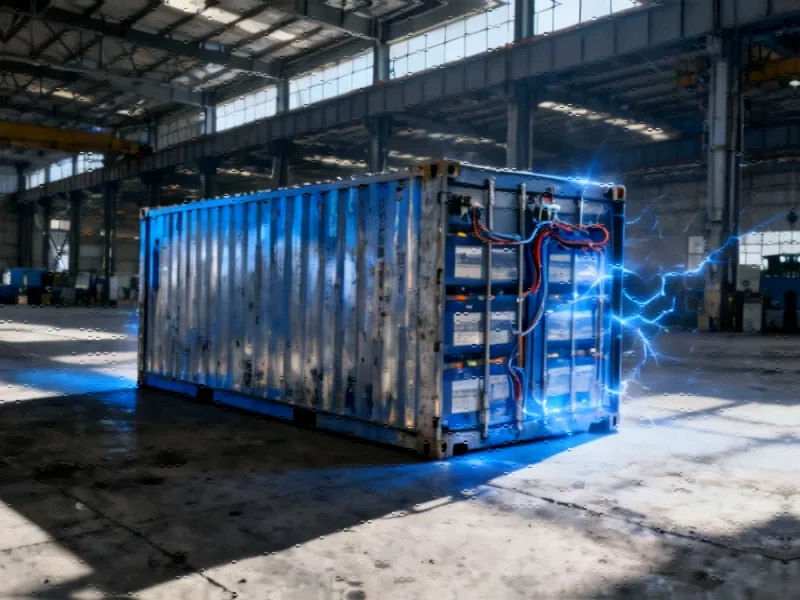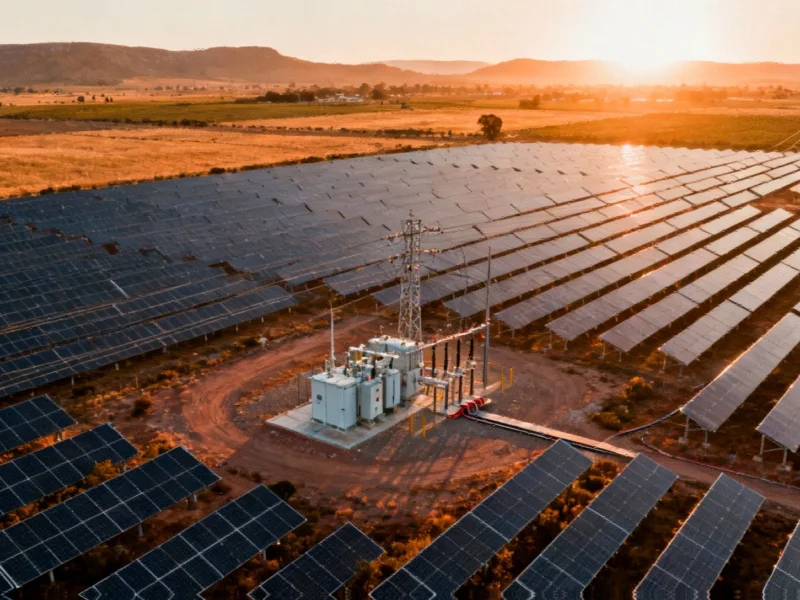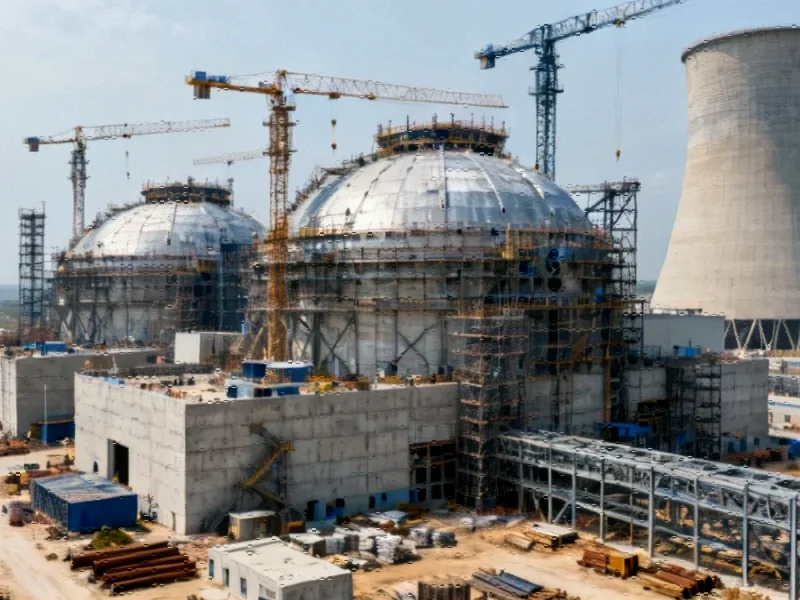The Grid Reliability Revolution
As global energy systems undergo their most significant transformation in a century, container-sized battery installations are emerging as the critical backbone enabling renewable energy integration at scale. What began as niche backup systems have evolved into sophisticated grid assets that are fundamentally changing how electricity is generated, stored, and distributed worldwide. The rapid deployment of these industrial-scale energy storage solutions represents one of the most important industry developments in power infrastructure since the advent of alternating current.
California’s Blueprint for Grid Transformation
California’s journey from rolling blackouts to battery-powered resilience offers a compelling case study in rapid energy infrastructure modernization. Following the 2020 grid collapse that left 800,000 homes without power, the state embarked on an unprecedented storage buildout that saw capacity increase from 500 megawatts to approximately 15,700 megawatts by mid-2025. This 3,000% expansion has fundamentally altered grid operations, with batteries now supplying more than a quarter of electricity during evening peaks and eliminating the need for emergency conservation alerts that previously plagued the state during heat waves.
Elliot Mainzer of the California Independent System Operator noted that the expanded battery network has “fundamentally altered reliability during peak demand periods,” representing a paradigm shift in how grid operators manage the delicate balance between supply and demand. The success of California’s approach has provided a template that other regions are now rapidly adopting as they confront similar challenges in their energy transitions.
Global Storage Expansion Accelerates
The battery storage revolution extends far beyond California’s borders, with BloombergNEF projecting worldwide installations to reach 100 gigawatts by the end of 2025 before more than doubling within the following year. China leads this global charge, having surpassed 100 gigawatts of new-energy storage capacity in 2025 – more than doubling its output in just twelve months according to the China Energy Storage Alliance. This explosive growth marks a historic inflection point where lithium-ion systems have overtaken pumped hydro as the dominant storage technology for the first time.
The United States remains a formidable competitor in this space, with S&P Global projecting the country’s grid-scale battery capacity will quintuple to 204 gigawatts by 2040. In 2025 alone, American battery capacity jumped 63% nationwide, with Texas emerging as a particularly active market for new installations. The European Union, Australia, and emerging markets including Chile and the Philippines are also building substantial storage fleets to meet growing demands for flexible, on-demand energy infrastructure. Together, China and the US now account for approximately 70% of global capacity, effectively setting the direction for the entire industry through their competing approaches to battery manufacturing, materials sourcing, and grid deployment.
Technology Battle: Tesla vs. BYD
The global race for storage dominance is largely playing out between two technological approaches championed by industry giants Tesla and BYD. Tesla’s high-density 4680 cylindrical cells, built with nickel-manganese-cobalt chemistry, prioritize performance characteristics including long range and rapid charging capabilities. However, these advantages come with increased complexity in thermal management, requiring sophisticated cooling systems to manage heat buildup during operation.
BYD’s alternative Blade battery utilizes lithium-iron-phosphate chemistry in an elongated, prismatic format that emphasizes cost efficiency, safety, and thermal stability over extreme energy density. The Blade’s LFP design distributes heat more evenly throughout the cell structure, significantly reducing fire risk and maintenance requirements while offering approximately $10 per kilowatt-hour savings in material costs. Industry analysts note that BYD’s complete vertical integration and cost advantage position it favorably for massive grid-scale applications, while Tesla’s technology remains the benchmark for systems requiring rapid deployment and maximum efficiency. These competing approaches represent different philosophical positions on how to optimize storage technology for the evolving needs of global energy systems.
Beyond Backup: The Multi-Function Storage Economy
Modern utility-scale batteries have evolved far beyond simple backup power applications, now serving as sophisticated financial assets that generate revenue through multiple streams including grid-stabilization services, frequency regulation, and sophisticated price arbitrage strategies. By strategically purchasing surplus wind or solar energy when wholesale prices collapse – sometimes dipping below zero – and reselling during peak demand periods, battery operators simultaneously maintain grid stability while ensuring renewable power remains economically viable.
This dynamic has become particularly pronounced in markets with high renewable penetration. In Spain, for instance, wholesale electricity prices turned negative for over 500 hours in 2025 as midday solar generation flooded the grid. Without large-scale storage to absorb this surplus, renewable curtailment would have been substantially higher, undermining the economic case for further clean energy investment. However, developers still face significant challenges navigating fragmented markets, inconsistent policy frameworks, and in some regions, problematic double-charging fees that can undermine project economics.
Regional Adaptation Strategies
As energy storage becomes the central pivot around which renewable systems operate, different regions are developing distinct strategies tailored to their specific resource mixes and grid characteristics. A July 2025 report by the Energy Transitions Commission found that “sunbelt” nations including India and Mexico, where solar generation follows highly predictable daily cycles, could potentially meet nearly all their grid balancing requirements with batteries alone.
By contrast, wind-dominant countries such as Germany and the United Kingdom will require more diverse hybrid systems that incorporate pumped hydro, compressed-air storage, and emerging hydrogen technologies to bridge longer-duration power gaps that exceed the economic limitations of current battery chemistries. This regional specialization highlights how storage solutions must be carefully matched to local conditions rather than deployed as one-size-fits-all solutions. Understanding these market trends is essential for developers and policymakers seeking to optimize their storage investments.
The Future Storage Landscape
The rapid evolution of battery technology continues to open new possibilities for grid management and renewable integration. As costs continue their downward trajectory and energy densities improve, storage systems are poised to become even more deeply embedded in energy infrastructure worldwide. The convergence of digital management systems, artificial intelligence optimization, and related innovations in grid-edge intelligence promises to further enhance the value proposition of industrial-scale batteries.
Looking ahead, the next frontier in storage development will likely focus on extending duration capabilities beyond the current 4-8 hour standard, developing more sustainable supply chains for critical materials, and creating standardized interconnection protocols that can reduce deployment timelines and costs. As these recent technology advancements mature, energy storage will increasingly function not just as a grid accessory but as the foundational architecture enabling completely decarbonized power systems. The implications extend far beyond electricity markets, potentially reshaping everything from transportation to industrial processes as cheap, reliable storage enables new applications and business models.
The ongoing transformation represents one of the most significant infrastructure shifts in modern history, with container-sized battery systems sitting at the very center of this revolution. As these systems continue to scale and evolve, they promise to unlock the full potential of renewable resources while providing the reliability that modern economies demand. For industry professionals tracking these developments, understanding the interplay between technology, policy, and market structures will be essential for navigating the rapidly changing energy landscape. Additional context on security and monitoring aspects of these systems can be found in coverage of surveillance evolution, while those interested in the policy dimensions may appreciate analysis of executive power applications in technology regulation.
This article aggregates information from publicly available sources. All trademarks and copyrights belong to their respective owners.
Note: Featured image is for illustrative purposes only and does not represent any specific product, service, or entity mentioned in this article.



